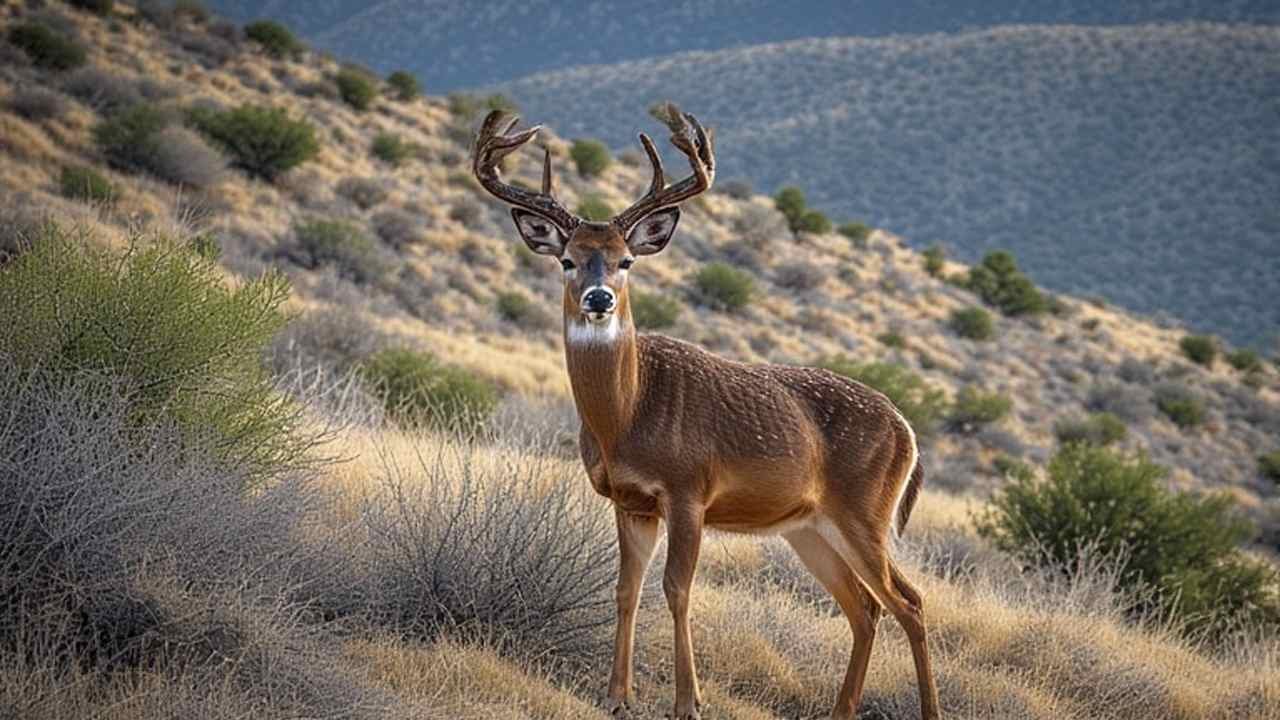Arizona Big Game Hunting: 2025-2026 Seasons and Draw Tips
Hey there, people who love the outdoors! You’ve come to the right place if you want to know about Arizona’s hunting seasons in 2025 and 2026. This guide goes over everything you need to know, from dates and species to licenses and places to hunt on public land. Arizona’s varied landscapes provide some truly one-of-a-kind hunting experiences, such as chasing Coues whitetail deer in the mountains and waterfowl in the wetlands. Let’s get started! 🦌🌵
📅 Quick Reference
- Deer: Archery seasons generally commence in August, while general rifle hunts occur from October to December, depending on the unit.
- Elk: Archery often begins in September, with rifle seasons occurring from October to December.
- Turkey: Spring seasons are popular, with dates usually in April and May.
- Javelina: General seasons often run from January to March.
- Youth Opportunities: Special youth-only hunts are available for species like deer and turkey.
- Licenses: Required for all hunters; tags are often drawn through a lottery system.
🦌 Big Game Overview
| Species | Season Type | Dates (2025–2026) | Key Details |
|---|---|---|---|
| Mule Deer & Coues Whitetail | Archery | Aug 22 – Sep 11, 2025 | Any legal archery equipment. |
| General Rifle | Varies by unit (Oct – Dec) | Specific dates depend on unit and hunt number. | |
| Muzzleloader | Oct 3 – 16, 2025 | Legal muzzleloading firearms. | |
| Elk | Archery | Sep 12 – Oct 3, 2025 | Any legal archery equipment. |
| General Rifle | Oct – Dec (varies) | Multiple hunt periods across different units. | |
| Muzzleloader | Oct 3 – 16, 2025 | Legal muzzleloading firearms. | |
| Black Bear | General | Aug – Dec (varies by unit) | Requires a tag; some units have spring seasons. |
| Bighorn Sheep | General | Varies by unit | Draw-only tags; limited entry. |
| Pronghorn Antelope | Archery | Aug 22 – Sep 7, 2025 | Any legal archery equipment. |
| General Rifle | Sep – Oct (varies) | Specific dates depend on unit. |
Note: Most big game tags are obtained through Arizona’s draw system. Applications are typically due in early February.
🦃 Turkey Dates
| Season Type | Dates | Key Details |
|---|---|---|
| Spring General Season | Apr 11 – May 18, 2026 | Only bearded turkeys; shotguns and archery gear. |
| Fall General Season | Nov 7 – Dec 5, 2025 | Either sex; it depends on the unit. |
| Youth Spring Turkey | Apr 4 – 10, 2026 | For hunters under 20; mentored hunt. |
Turkey hunting is excellent in Arizona’s mountainous regions, particularly for the Gould’s subspecies.
🦝 Furbearer Opportunities
| Species | Season | Key Details |
|---|---|---|
| Coyote | Year-round | No limits on bags; you need a hunting licence. |
| Bobcat | Jan 1 – Dec 31, 2026 | You need a furharvester permit |
| Fox | Jan 1 – Dec 31, 2026 | You need a furharvester permit |
| Raccoon | Year-round | Hunting license required. |
You need a furharvester license to trap or hunt most animals that have fur during set times of the year.
🐦 Small Game Section
| Species | Season Dates | Daily Bag Limit |
|---|---|---|
| Mourning Dove | Sep 1 – 15, 2025 | 15 |
| Nov 21 – Dec 4, 2025 | 15 | |
| Gambel’s Quail | Oct 11 – Feb 9, 2026 | 15 |
| Squirrel | Year-round | 10 |
| Cottontail Rabbit | Year-round | 10 |
There are excellent chances to introduce newcomers to hunting customs through small game.
🦆 Complete Waterfowl Seasons
There are federal rules for waterfowl seasons, but each state has its own dates:
| Species | Season Framework | Key Details |
|---|---|---|
| Ducks | Oct 4 – 13, 2025 | 7 ducks, including no more than 2 mallards (1 hen) |
| Nov 7 – Jan 18, 2026 | 7 ducks, including no more than 2 mallards (1 hen) | |
| Geese | Varies by zone | Generally Oct – Jan; check specific zone regulations |
| Teal | Sep 13 – 28, 2025 | 6 teal |
Licenses: Anyone who hunts waterfowl in Arizona and is 16 or older must have the Arizona waterfowl stamp ($13) and the federal duck stam
🐗 Other Available Game
| Species | Season | Key Details |
|---|---|---|
| Sandhill Crane | Varies by zone | Permit required; limited entry |
| Band-tailed Pigeon | Sep 1 – 15, 2025 | 5 birds |
| Crow | Year-round | No bag limit |
| Bullfrog | Year-round | 12 frogs |
Arizona offers unique opportunities like mountain lion (year-round with tag) and bison (limited draw tags).
🗺️ Hunting Zones
Arizona is divided into 51 Game Management Units (GMUs) across seven regions. Each unit has specific regulations, seasons, and tag allocations. The state offers diverse terrain from desert lowlands to mountainous forests. Visit the Arizona Game and Fish Department website for detailed maps and unit boundaries.
Public Land Tips: Arizona has extensive public land opportunities, including national forests, BLM land, and state trust land (requires permit). Always verify access rights before hunting.
Permit & License Details
| License Type | Resident Fee | Non-Resident Fee | Key Exemptions |
|---|---|---|---|
| Hunting License | $37 | $160 | Youth under 10, disabled veterans |
| Combination Hunt/Fish | $57 | $160 | Same exemptions |
| Youth Hunting | $5 | $5 | Hunters 10-17 |
| Short-Term (1-day) | $15 | $15 | For occasional hunters |
| Waterfowl Stamp | $13 | $13 | Required for waterfowl hunters 16+ |
Additional Requirements:
- Hunter Education: Required for hunters born after January 1, 1967
- Tag Applications: Most big game tags are drawn; application period typically January-February
- State Trust Land Permit: Required for access to state trust lands ($15 online)
❓ Arizona Hunting Quick FAQ
- How does Arizona’s draw system work?
A lottery system is used to give out most big game tags. People who don’t win draws get extra points, which makes it more likely that they will win in the future. - Can I hunt javelina year-round?
No, javelina has specific seasons, typically January through March, with archery seasons in August-September. - Do I need a license to hunt coyotes?
Yes, a hunting license is required, but there’s no closed season and no bag limits. - Are there any mentored youth programs?
Yes, Arizona offers youth-only hunts and mentored opportunities for hunters under 20. - What’s the best time to apply for tags?
The main draw application period is typically in early February, with a second draw in August for leftover tags. - Are electronic calls legal?
Electronic calls are legal for predatory and fur-bearing animals but prohibited for game species.
🔗 List of Related Guides
Conclusion
Arizona’s hunting seasons from 2025 to 2026 are very varied, with everything from desert mule deer to mountain elk. Planning ahead is the key to success: know how the draw system works, apply for tags early, and learn the rules for each unit. Always check with the Arizona Game and Fish Department to make sure the rules are still the same, as they can change. Whether you’re a resident or a visiting hunter, be respectful of the land, follow the rules of ethical hunting, and most importantly, stay safe out there. 🐾🎟️

